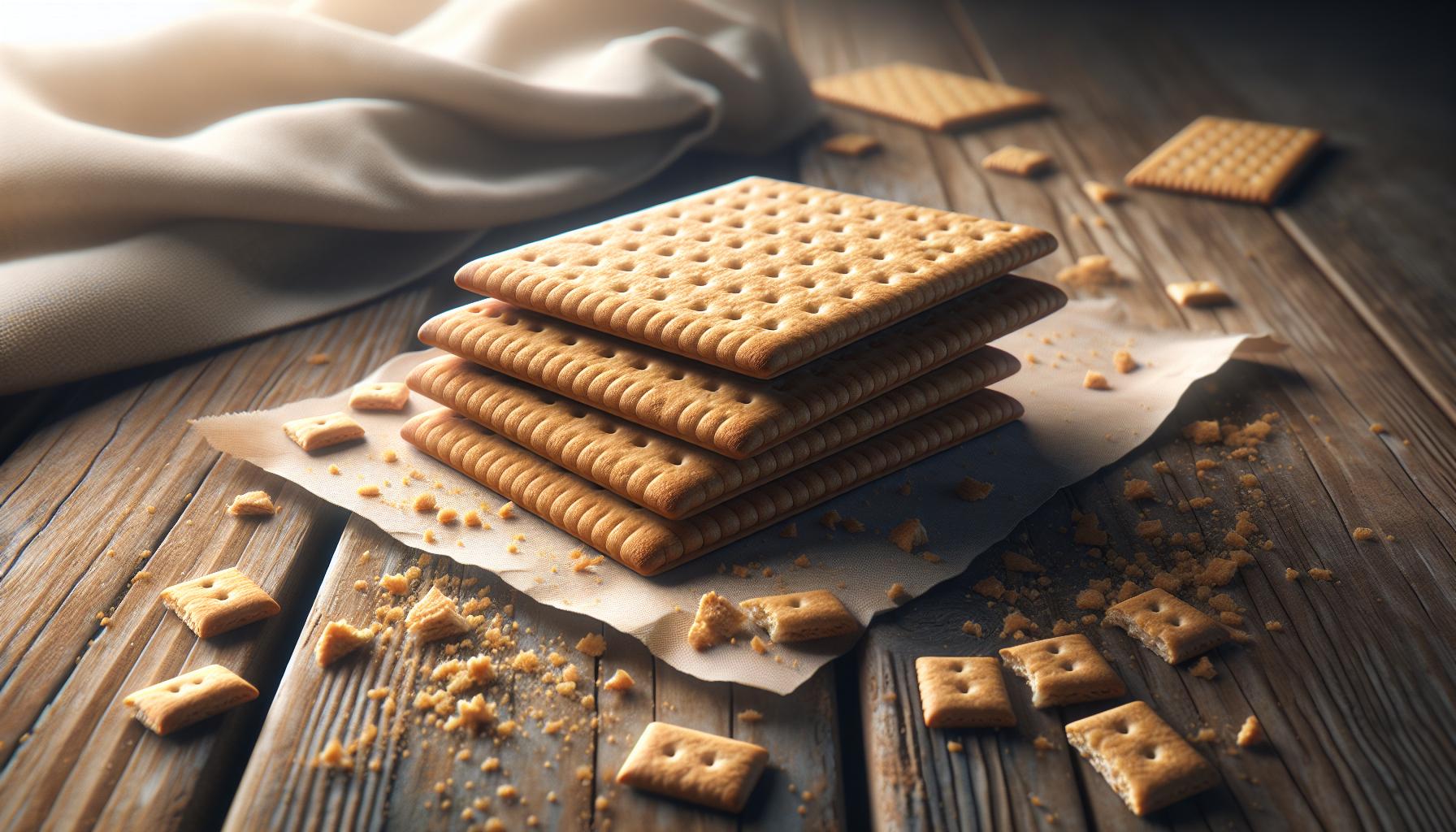Graham crackers have been delighting taste buds since their invention in 1829 and remain a beloved snack across America. These sweet rectangular treats aren’t just tasty – they’re packed with interesting nutritional properties that might surprise even the most dedicated snack enthusiasts.
From s’mores to cheesecake crusts these versatile crackers have become a pantry staple. While many enjoy them without a second thought understanding their nutritional content can help make informed snacking decisions. Whether someone’s counting calories watching their sugar intake or simply curious about what’s in their favorite crispy companion it’s worth taking a closer look at what makes up these honey-kissed squares.
Graham Vracker Nutrition Facts
Graham crackers consist of a blend of graham flour, whole wheat flour, enriched flour and sweeteners. These crackers trace their origins to Sylvester Graham’s original recipe focusing on whole grain ingredients.
Key Ingredients and Processing
Modern graham crackers contain Graham flour mixed with enriched white flour, honey or molasses, vegetable oil, salt and baking soda. The manufacturing process involves mixing the dry ingredients with liquid components to form a dough. Food manufacturers utilize specialized equipment to roll, cut and bake the dough into thin, perforated crackers. The baking process creates the characteristic golden-brown color and crispy texture.
| Main Ingredients | Purpose |
|---|---|
| Graham flour | Base ingredient |
| Enriched flour | Texture improvement |
| Honey/Molasses | Natural sweetener |
| Vegetable oil | Moisture retention |
| Salt | Flavor enhancement |
| Baking soda | Leavening agent |
Types of Graham Crackers
Graham crackers come in three primary varieties: original, honey and cinnamon. Original graham crackers maintain the classic wheat flavor profile. Honey graham crackers incorporate additional honey for enhanced sweetness. Cinnamon graham crackers feature a warming spice blend. Manufacturers produce these varieties in different shapes including squares, rectangles and miniature sizes. Low-fat versions substitute oil with alternative ingredients while gluten-free options use rice or almond flour instead of wheat-based flours.
| Graham Cracker Type | Key Flavor Addition |
|---|---|
| Original | None |
| Honey | Natural honey |
| Cinnamon | Ground cinnamon |
Graham Cracker Nutrition Facts

A standard serving of 2 full Graham cracker sheets (approximately 28 grams) contains essential nutrients that contribute to daily dietary intake. The nutritional composition varies slightly among different brands and flavors.
Calories and Macronutrients
One serving of Graham crackers contains 120 calories with 2 grams of protein. The total carbohydrate content reaches 22 grams, including 8 grams of sugar and 1 gram of dietary fiber. These crackers provide 3 grams of fat, with less than 0.5 grams from saturated fat. The sodium content measures 150 milligrams per serving.
| Nutrient | Amount per Serving (28g) |
|---|---|
| Calories | 120 |
| Protein | 2g |
| Total Fat | 3g |
| Carbohydrates | 22g |
| Sugar | 8g |
| Fiber | 1g |
| Sodium | 150mg |
Vitamins and Minerals
Graham crackers contain essential micronutrients from enriched flour. Each serving provides 10% of the daily value for iron and 2% for calcium. The crackers contain trace amounts of thiamin, riboflavin and niacin. Additional minerals include 80 milligrams of potassium and small amounts of zinc.
| Nutrient | % Daily Value |
|---|---|
| Iron | 10% |
| Calcium | 2% |
| Potassium | 80mg |
| Thiamin | <2% |
| Riboflavin | <2% |
| Niacin | <2% |
Health Benefits of Graham Crackers

Graham crackers offer several nutritional advantages when consumed as part of a balanced diet. These whole-grain snacks contain essential nutrients that contribute to overall health maintenance.
Fiber Content and Digestive Health
Graham crackers made with whole wheat flour provide dietary fiber that supports digestive health. One serving contains 1 gram of fiber, which aids in maintaining regular bowel movements. The combination of soluble and insoluble fiber helps slow digestion, creates a feeling of fullness, and supports beneficial gut bacteria growth. Graham crackers made with enriched flour offer additional B vitamins, including thiamin, riboflavin, and niacin, which play crucial roles in digestive system function.
Energy and Blood Sugar Impact
Graham crackers deliver steady energy through their complex carbohydrate content. The 22 grams of carbohydrates per serving include both simple and complex varieties, providing immediate and sustained energy release. Their moderate glycemic index means glucose enters the bloodstream at a controlled rate compared to high-sugar snacks. The protein content (2 grams per serving) works alongside carbohydrates to help stabilize blood sugar levels. The presence of whole grains in graham crackers contributes to their ability to provide sustained energy without significant blood sugar spikes.
Potential Drawbacks and Concerns

Graham crackers present several nutritional considerations that impact their role in a balanced diet. Understanding these limitations helps make informed decisions about consumption frequency and portion sizes.
Sugar and Refined Carbohydrates
Graham crackers contain 8 grams of sugar per serving, contributing to a daily sugar intake that exceeds recommended limits for many consumers. The refined carbohydrates in graham crackers metabolize quickly, leading to potential blood sugar spikes. Store-bought varieties often include added sugars like high fructose corn syrup, honey or molasses that boost the total sugar content. The glycemic load of graham crackers increases when paired with sweet toppings like marshmallows or chocolate.
| Nutritional Concern | Amount per Serving |
|---|---|
| Added Sugars | 8g |
| Total Carbohydrates | 22g |
| Refined Flour | 65% of total ingredients |
Gluten Sensitivity Issues
Graham crackers contain three forms of wheat flour: graham flour, whole wheat flour and enriched flour. People with celiac disease experience intestinal damage from consuming these gluten-containing ingredients. Those with non-celiac gluten sensitivity report symptoms like bloating, headaches and fatigue after eating graham crackers. Regular varieties provide no safe options for individuals following gluten-free diets. Cross-contamination risks exist even in facilities that produce both regular and gluten-free graham crackers.
| Gluten Sources | Percentage in Formula |
|---|---|
| Graham Flour | 35% |
| Whole Wheat Flour | 15% |
| Enriched Flour | 15% |
Healthy Ways to Enjoy Graham Crackers
Graham crackers offer versatile snacking options when incorporated mindfully into a balanced diet. These wholesome treats combine well with nutrient-rich ingredients to create satisfying snacks.
Portion Control Tips
A single serving of graham crackers equals 2 full rectangular sheets broken into 8 smaller rectangles. Storing crackers in pre-portioned snack bags prevents mindless eating while maintaining freshness. Breaking full sheets into smaller pieces creates a visual portion guide that extends snacking satisfaction. Single-serve packages eliminate guesswork in portion management. Creating a designated snack drawer with pre-measured servings supports mindful eating habits.
- Almond butter + sliced bananas: 7g protein
- Greek yogurt + berries: 12g protein
- Cottage cheese + honey: 13g protein
- Ricotta + cinnamon: 8g protein
Creative Healthy Combinations
Graham crackers stand as a versatile and beloved snack that can be part of a balanced diet when consumed mindfully. While they offer some nutritional benefits through whole grains fiber and steady energy release they do contain added sugars and refined carbohydrates that should be monitored.
For those watching their nutrition making informed choices about portion sizes and pairing Graham crackers with protein-rich toppings can help create a more balanced snack. Whether enjoying them plain as part of s’mores or in creative healthy combinations Graham crackers remain a time-tested treat that fits into most eating plans with proper portion control.



